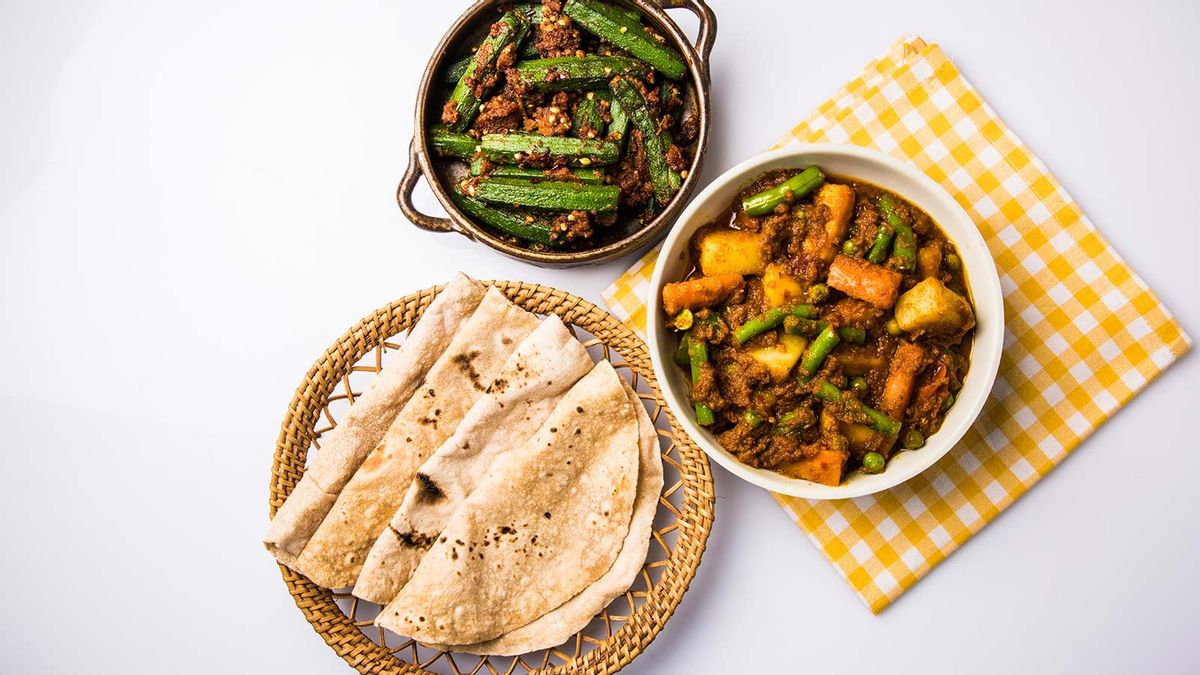Adopting a healthy lifestyle can get overwhelming especially when a new health food is always trending – we’re talking about you, quinoa.
Riding closely on these food fads, companies and manufacturers then peddle processed foods in the guise of ‘healthy food’. According to a 2017 report by the Food Safety and Standards Authority of India (FSSAI), this push to alter natural food that is already nutritious to be more nutritious has led to Indians consuming more total fats, carbohydrates, sugar and salt.

A mere glance at supermarket aisles will have you believe that every food item is “healthy” – think packaged foods with labels screaming gluten-free, fat-free, sugar-free, added vitamins and minerals, and the list goes on.
With so many healthy options available to those of us who aren’t experts, it can become tough to get a sense of what’s genuinely healthy and what’s not. Enter a back-to-basics food movement called clean eating which is here to challenge the now mainstream ways of eating.
What is clean eating?
Putting it simply, Swati Bhushan, Chief Clinical Nutritionist at the Hiranandani Hospital Vashi - A Fortis Network Hospital, explains, “Clean eating is about consuming real and natural foods that are free from preservation and processing technologies.”
So, if you’re planning to begin eating clean, it means eliminating processed foods from your day. “This modest and homespun lifestyle encourages you to embrace natural, whole foods with an emphasis on fresh, seasonal produce,” adds Bhushan.
Not a diet
Unlike other diets, clean eating is not about losing weight. It is not even a diet. It is rather a lifestyle choice to eat cleaner and better. Clean eating encourages a healthy relationship with food so that you can use it to help nourish your body. It is a belief system that propagates the idea that the way most of us eat today is ‘not clean’.
“We are so caught up in our routines that we find comfort in easily available foods. So much that now we have come up with a term to describe eating regular real-food,” says Lovneet Batra, a Delhi-based nutritionist.
“While it does require some effort to eat clean in an environment that works totally against it – for many people, buying a burger is much more affordable and satisfying than buying an apple – which is why we’ve come up with the term ‘clean eating’ where now fresh and home-cooked meals have become a luxury,” adds Batra.
Food activist and author of In Defense of Food, The Omnivore’s Dilemma, and Food Rules, Michael Pollan, sums it up perfectly, “Don’t eat anything your great-grandmother wouldn’t recognise as food.”
What’s on the menu?
Real food is the foundation of clean eating. This lifestyle choice encourages you to feed your body and not just your belly. The characteristics of ‘clean food’ include foods that are “home-cooked, basic, made with whole ingredients, with minimal processing,” explains Jaee Khamkar, a dietician at Fortis Hospital, Kalyan.
Choose plant-based foods like fresh fruits and vegetables that are seasonal, local, and if possible, organic too. Eating clean includes consuming food that has undergone minimum processing steps from farm to fork and foods that are not genetically modified. Ethically pasture-raised eggs, low-fat dairy, nuts, beans and lentils, fit the clean eating menu, explains Khamkar.
What’s not?
When it comes to the list of foods to avoid, it may seem long, but once you embrace this healthy lifestyle, they will no longer be appealing to you.
Avoid foods with added or refined sugar but remember that there is more to purging sugar from your diet than simply saying no to chocolates or sweets. “The list also includes cookies, sauce, bread and many brands of salad dressing,” informs Khamkar.
Avoid refined grains like white rice, pasta, white bread and processed breakfast cereals, to be a step closer to cleaning your diet.
Eliminate refined carbohydrates in the form of maida and its products (bread, pav and other such bakery foods), junk foods and fried foods, stresses Bhushan.
It’s important to note that this is just a guideline, and not a comprehensive list, to help you get an idea of the foods you can include and exclude from your diet.
Where to start?
A good place to start is your own kitchen. You may not be an avid cook but “cooking your own meals from scratch allows you to opt and control the ingredients that end up on your plate,” says Khamkar. Rid your pantry of all the no-no food items to avoid falling off the wagon a few days into your new lifestyle choice of eating clean.
The next time you feel like snacking on a pack of potato chips or gulping down canned fruit juice, take a look at the list of preservatives that go into it.
Batra explains how you should read the ingredients label, “The ingredients list is made in descending order which means ingredients present in the highest amount are listed first. If you don’t recognise the names, then avoid the product. A clean product will have a short ingredient list with real ingredients as opposed to laboratory counterparts.”


